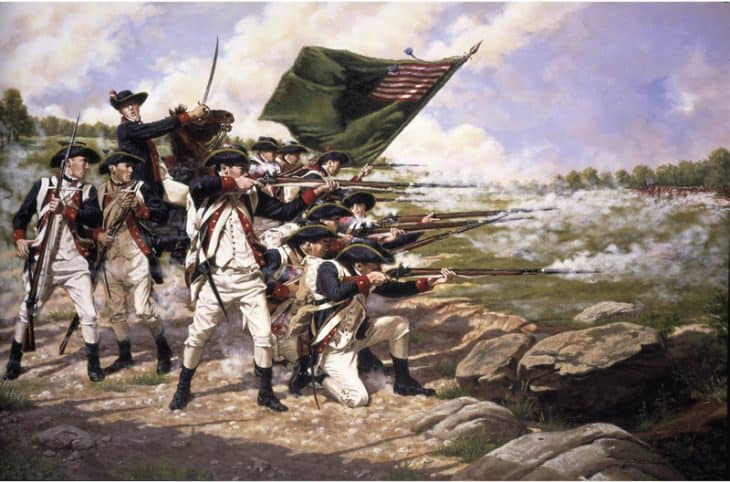
- Synonym: American War of Independence
- Duration: 8 years (1775 – 1783)
- Sides: British vs. Colonists
- Location: North America, Europe, India
- Causes: Taxes, rebellion, violence
- Battles: Lexington and Concord, Bunker Hill, Saratoga, Quebec
- Winners: USA and their allies
- Movies: John Adams, April Morning, The Patriot, The Crossing
- Type: Independence war
- Commanders: George Washington, Nathanael Greene, Sir William Hove, Thomas Gage
- Beginning: The War Officially Started near Boston on April 19, 1775
- Involvement: Revolutionary War Was Actually a World War
- Casualties: The War May Have Claimed over 100,000 Lives
- Commander: George Washington Was the Commander-in-Chief of the Continental Army
- Sides: Native Americans and Loyalists Fought on the British Side
- Alliances: Thomas Jefferson and Benjamin Franklin Established Alliances That Helped Win the War
- British. Howe, H. Clinton and G. Carleton Were British Commanders-in-Chief during the War
- Documents: The Declaration of Independence is the Most Important Document of the War
- Unity: Only 40 – 45% of Colonists Supported the Rebellion
- End: The Treaty of Paris in 1783 Officially Ended the Revolutionary War
- George Washington Put Down the Newburgh Conspiracy Rebellion Himself
- The First Military Submarine Was Used during the Revolutionary War
- Benedict Arnold Was an Important Asset of the Colonists
- Believe It or Not, Women Also Fought in the Continental Army
- George Washington Was Apparently the Greatest Man in the World
- There Was a Sequel to the Boston Tea Party
- The Word “Independence” Never Appears in the Declaration of Independence
- Continental Congress Hired Pirates to Attack British Ships
- Mel Gibson’s Character in The Patriot Was Inspired by Real Patriots
- The Famous Battle of Bunker Hill Was Actually Fought on Breed’s Hill
Revolutionary War Facts Infographics

The War Officially Started near Boston on April 19 1775
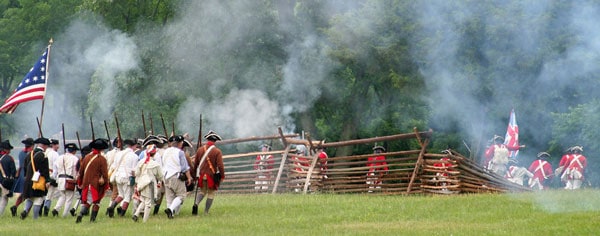
Revolutionary War facts reveal that the war’s first military conflicts started in the towns of Lexington and Concord on the morning of April 19. Prior to that, there were two other violent incidents in Boston: the 1770 Boston Massacre, where British soldiers killed 5 civilians on King Street (today known as State Street), and the 1773 Boston Tea Party, where a few members of the secret society Sons of Liberty destroyed an entire British shipment of tea. Neither of these two incidents were officially a part of the war, but they created tensions that gradually escalated to war in April 1775.
Revolutionary War Was Actually a World War
Although it was primarily an independence war of 13 American colonies against the Kingdom of Great Britain, fought in North America, it escalated to include various other parts of the world. France and Spain were the Colonists’ main allies, backed-up by the Dutch Republic and the Kingdom of Mysore, while Britain was aided mostly by Germans and the natives of North America. The battles were fought on the land and in the waters of North America, Europe, Africa, India and the Caribbean.
The War May Have Claimed over 100,000 Lives
As was the case with most wars of the era, the Revolutionary War saw more deaths caused by disease than actual combat. Around 7,000 Americans were killed in battle, together with 10,000 French and 5,000 Spanish soldiers. On the other side, about 6,000 British soldiers died in combat, along with 1,800 Germans. But if deaths outside of direct combat are included, the number may surpass the 100,000 victims mark, depending on the estimates used. The estimates vary greatly, ranging from 25,000 to 70,000 Americans killed, and 40,000 to 50,000 British.
George Washington Was the Commander-in-Chief of the Continental Army
After the Battles of Lexington and Concord, the Second Continental Congress created the Continental Army on June 14 1775. George Washington, veteran of the French and Indian War between 1754 and 1758, was appointed General and Commander-in-chief of the army, which, on average, consisted of about 15,000 soldiers through the years of war. After 8 years of combat and the victory of the Thirteen Colonies and its allies, the Continental Army was disbanded and replaced by the United States Army in 1784. George Washington became the first President of the USA in 1789.
Native Americans and Loyalists Fought on the British Side
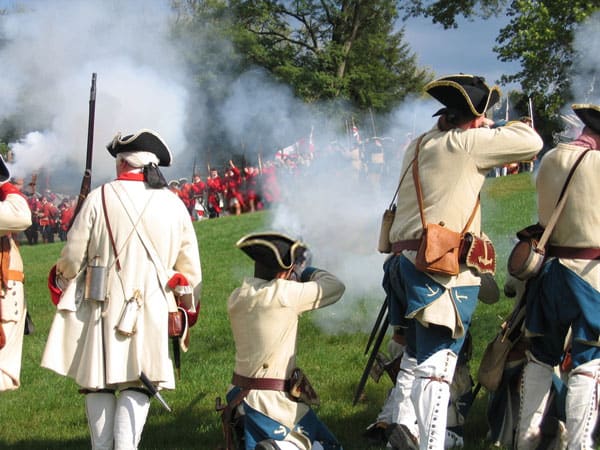
Although some Native Americans fought on the Colonists’ side, most (about 13,000) of those who were directly involved in the war fought for the British side. This led to a few splits inside native tribes, most notably among the Mohawk. The majority of Native Americans were joined by at least 25,000 Loyalists who were also against the revolution and remained loyal to the British Crown. It is estimated that about 60,000 Loyalists immigrated to the US during and after the war.
Thomas Jefferson and Benjamin Franklin Established Alliances That Helped Win the War
Two famous Founding Fathers, Thomas Jefferson, who later became the 3rd President of the USA, and Benjamin Franklin were the driving forces behind alliances with big European nations that helped the Colonists win the war. They helped establish alliances with France, which was indirectly involved in the war since 1776; Spain, which joined the war in 1779; and the Dutch Republic, which officially entered the war in 1780.
W. Howe, H. Clinton and G. Carleton Were British Commanders-in-Chief during the War
According to Revolutionary War facts, Sir William Howe was the first of them, serving from September 1775 until May 1778. He was in charge of the Boston siege and won the famous Battle of Bunker Hill, but was later involved in the poor British planning of the Saratoga campaign, consequently inviting France to officially join the war on the Colonists’ side.
In 1778, he was replaced by Sir Henry Clinton, who successfully won the Siege of Charleston in 1780, but eventually greatly contributed to the British defeat in the Siege of Yorktown.
The last of the British Commanders-in-Chief, Sir Guy Carleton, initially serving as the Governor of Quebec, was appointed in May 1782, but by then the Colonists were well on their way to victory. One of his major roles as the Commander-in-chief of the British forces was to supervise the final evacuation of the British troops.
The Declaration of Independence is the Most Important Document of the War
The Declaration of Independence is the most important document in the entire history of the USA as well. The 13 Colonies (Delaware, Pennsylvania, New Jersey, Georgia, Connecticut, Massachusetts Bay, Maryland, South Carolina, New Hampshire, Virginia, New York, North Carolina, and Rhode Island and Providence Plantations) announced their independence from the Kingdom of Great Britain with this document, effectively forming a new nation: the Unites States of America.
The main driving force behind the Declaration was John Adams (later becoming the second President of the USA), but it was mostly written by Thomas Jefferson (the third President of the USA). It was unanimously approved on July 2 1776, but officially confirmed by the Second Continental Congress on July 4 1776 – the day which is today still commemorated as the Independence Day across the USA.
Only 40 – 45% of Colonists Supported the Rebellion
Although the joint efforts and the vision of the Colonists eventually won the war, and won independence from the British, the Colonists were divided into 3 very different groups during the Revolutionary War. Some 40 – 45% of them supported the rebellion and the Patriots, but 15 – 20% opposed the revolution and remained loyal to the British Crown. And the rest? They tried to remain neutral and avoid the feud as much as possible…
The Treaty of Paris in 1783 Officially Ended the Revolutionary War
Revolutionary War facts show that the war effectively ended in April 1782 when the British House of Commons voted to end it, and peace negotiations began. But the official ending of the Revolutionary War was marked with the Treaty of Paris on September 3 1783, signed by the representative of the then British monarch, King George III, David Hartley, and the representatives of the USA – John Adams, Benjamin Franklin and John Jay. The Treaty acknowledged the USA as a sovereign state and granted various territorial provisions to the USA and its allies.
George Washington Put Down the Newburgh Conspiracy Rebellion Himself
Towards the end of 1782, a group of officers of the Continental Army, organized under the leadership of General Henry Knox, drafted a memorial to Congress, stating their unhappiness over poor financial support for the soldiers and subtly threatening a rebellion. But the possible rebellion was put down by none other than the Commander-in-chief himself, George Washington, in a meeting with the officers in March 1783.
Not by force and not through threats – he united the Continental Army using just the power of his words. “Gentlemen, you will permit me to put on my spectacles, for I have not only grown gray but almost blind in the service of my country” were the words that had the most impact on his fellow officers, supposedly moving many of them to tears and effectively ending the possibility of a rebellion.
The First Military Submarine Was Used during the Revolutionary War
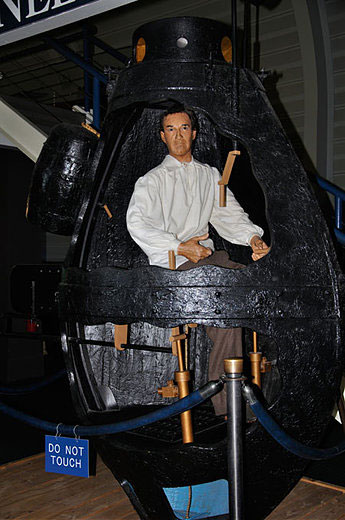
Although the first reliably documented submarine appeared in the 17th century, it was not until 1775 when the world got its first submarine capable of independent underwater movement. The Turtle, as the submarine was named by its American inventor, David Bushnell, is the first documented submarine to be used in combat – on September 6 1776, it was used to attack the HMS Eagle, the flagship of the British fleet. Although the attack was unsuccessful, the Turtle set the foundations for modern submarine warfare.
Benedict Arnold Was an Important Asset of the Colonists
Although Benedict Arnold, a General in the Continental Army during the first years of the Revolutionary War, is today best-known as the traitor who joined the British during the war, he was actually one of the best generals the Continental Army had ever had. He bravely resisted the bigger British fleet in the Battle of Lake Champlain, and won the battle at Saratoga in 1777. In the words of historian George Neumann, the Colonists would probably have lost the Revolutionary War if not for Arnold.
Revolutionary War facts reveal that Arnold supposedly joined the British due to his disapproval of the French alliance, but, coincidentally, he himself largely caused the French to join the war by winning at Saratoga…
Believe It or Not, Women Also Fought in the Continental Army
Although women fighting wars was a ridiculous idea at the time, quite a few of them served in the army as nurses or cooks, and some of them even as soldiers on the battlefield! The most well-known among them are Molly Pitcher, who replaced her wounded husband behind a canon in the Battle of Monmouth, and Margaret Corbin, who served, and was wounded, in her husband’s gun crew in the Battle of Harlem Heights.
George Washington Was Apparently the Greatest Man in the World
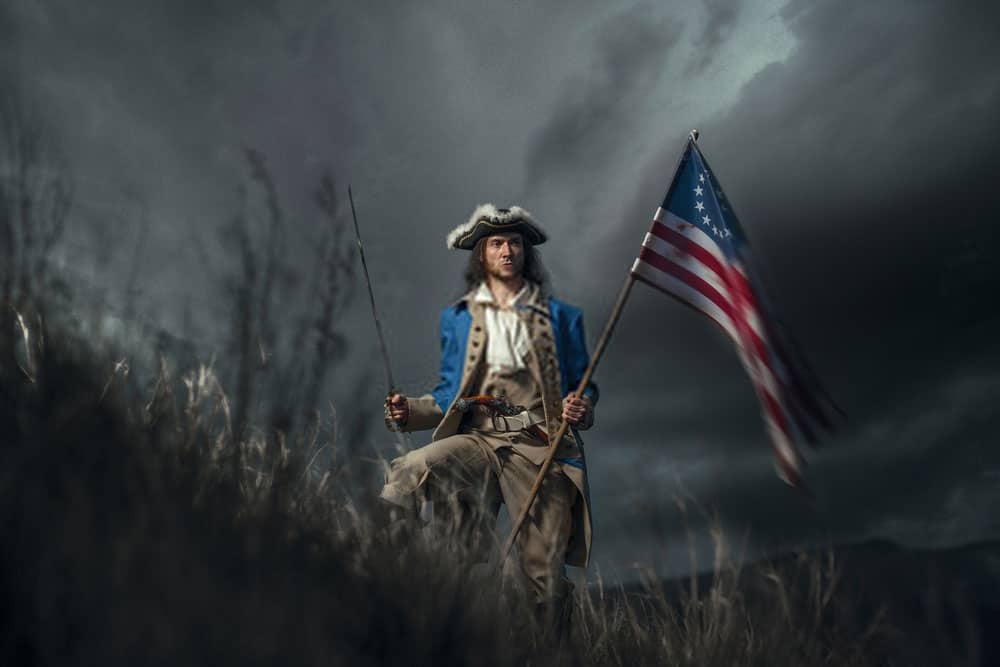
At least, he was according to the words of King George III after the British realized that the war was lost. The king first decided to abdicate, but then withdrew his decision, finding consolation for the defeat of British forces in his belief that Washington would become a dictator and make America pray for the return of the British Crown.
Washington of course did no such thing. He calmly resigned his commission in 1783, returning the command of the army to Congress. When King George III was notified about Washington’s plans to do that, he supposedly said, “If he does that, sir, he will be the greatest man in the world.”
There Was a Sequel to the Boston Tea Party
While practically every American knows about the 1773 Boston Tea Party, when Sons of Liberty dressed as Mohawk Indians destroyed an entire British shipment of 342 chests of tea, many don’t know that there was a sequel to the “tea drowning” in Boston. They reprised their attack in March 1774, but with much less success than the first time – they got hold of only 16 chests of tea…
The Word “Independence” Never Appears in the Declaration of Independence
Although arguably the most important document in US history, proclaiming independence from the British, the Declaration of Independence actually never uses the word “independence”. Revolutionary War facts show that it was originally named “The Unanimous Declaration of the Thirteen United States of America”.
Continental Congress Hired Pirates to Attack British Ships
Since the Continental Army had very limited funds and could not afford as big a navy as the British could, they were forced to hire private combat-able ships. These so called “privateers” were actually nothing more than pirates prior to the war…
Mel Gibson’s Character in The Patriot Was Inspired by Real Patriots
Benjamin Martin, the fictional hero of the 2000 historical spectacle The Patriot, was modeled on real Colonial officers and heroes of the Revolutionary War: Thomas Sumter, Daniel Morgan, Andrew Pickens and Francis Marion.
The Famous Battle of Bunker Hill Was Actually Fought on Breed’s Hill
According to Revolutionary War facts, most of the battle took place on the 62-feet high Breed’s Hill, but was named after the adjacent Bunker Hill. Breed’s Hill is thus the home of the commemorative Bunker Hill Monument…
Revolutionary War Facts — Facts about the Revolutionary War Summary
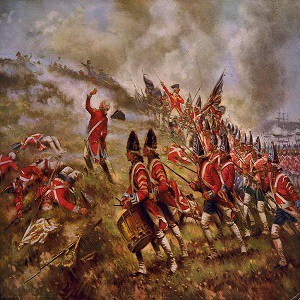 The Revolutionary War was the war for American Independence between 1775 and 1783. The 13 colonies that wanted independence were represented by the Patriots and aided by France, Spain and Holland. They fought the British founders of these colonies, who were aided by many Native Americans, a few hundred German troops and Loyalists – inhabitants of the colonies that were against the rebellion. Estimates of the casualties of this 8-year war vary greatly, but it is clear that the deaths of men and women on both sides changed the world forever. The Colonies were confirmed and accepted as a new nation after the war, becoming the United States of America, and took an important role in shaping the world in the following centuries.
The Revolutionary War was the war for American Independence between 1775 and 1783. The 13 colonies that wanted independence were represented by the Patriots and aided by France, Spain and Holland. They fought the British founders of these colonies, who were aided by many Native Americans, a few hundred German troops and Loyalists – inhabitants of the colonies that were against the rebellion. Estimates of the casualties of this 8-year war vary greatly, but it is clear that the deaths of men and women on both sides changed the world forever. The Colonies were confirmed and accepted as a new nation after the war, becoming the United States of America, and took an important role in shaping the world in the following centuries.
Was this page helpful?
Our commitment to delivering trustworthy and engaging content is at the heart of what we do. Each fact on our site is contributed by real users like you, bringing a wealth of diverse insights and information. To ensure the highest standards of accuracy and reliability, our dedicated editors meticulously review each submission. This process guarantees that the facts we share are not only fascinating but also credible. Trust in our commitment to quality and authenticity as you explore and learn with us.
